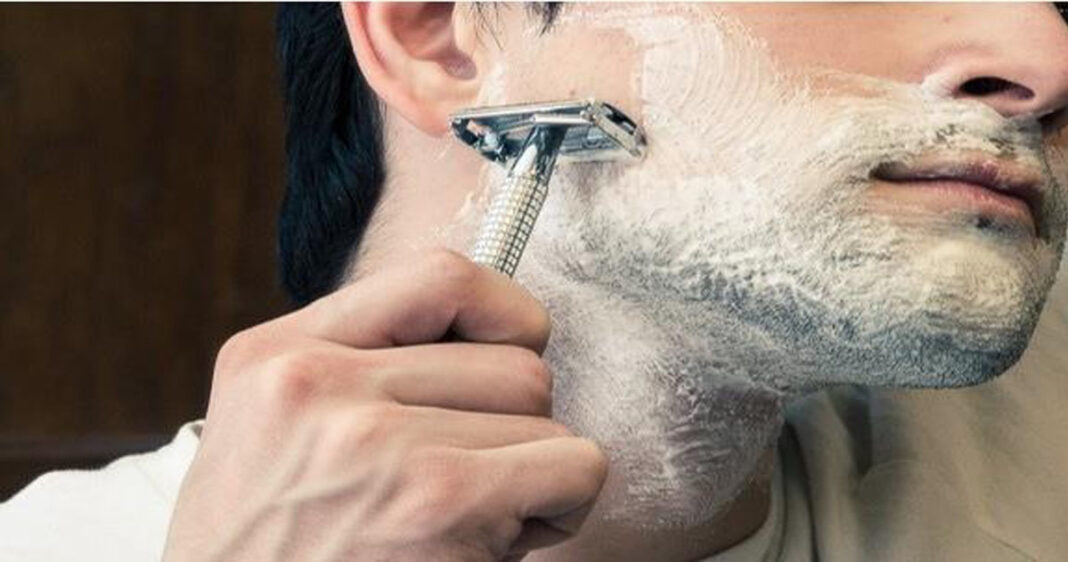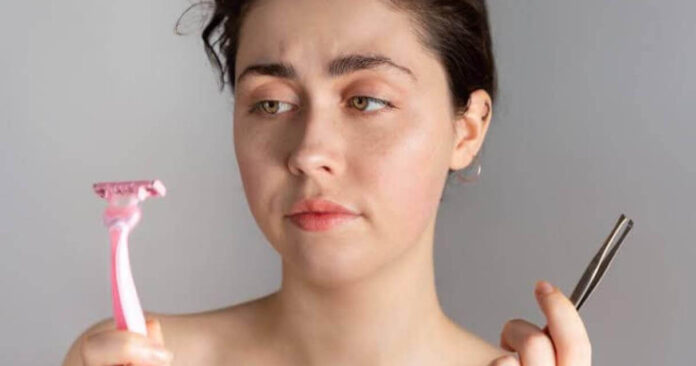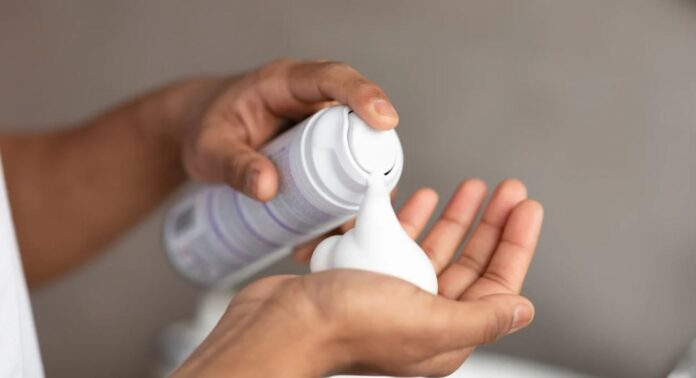Are you noticing how people around you are ditching modern shaving methods for traditional safety razors and wondering what it is all about? Safety razors are a waste-free alternative to plastic cartridge razors and are also more gentle on the skin.
However, using them is always a little more difficult than using the other razors. So, if you are looking for a guide on using a safety razor safely, you are in the right place. You can learn how to shave with a safety razor here.
Also, check out straight vs. safety razors to know the difference between the common types of traditional razors.
Table of Contents:
- Part 1: Preparing for the Shave
- Part 2: How to Shave with a Safety Razor?
- Part 3: Tips for Perfect Shaving with a Safety Razor
- Part 4: FAQs for Shaving with a Safety Razor
Part 1: Preparing for the Shave

The first step in shaving the beard is always to prepare yourself and your materials for the shaving. Here is how you can prepare these.
Gather Your Gear
The supplies you require for a skilled shaving experience are:
-
-
-
-
- A safety razor: You can use a single- or double-edged shaving razor. Double-edged safety razors are more economical and efficient than single-edged razors.
-
- A set of blades: A new sharp blade helps groom the beard smoothly rather than tugging the skin.
-
- A shaving cream: A shaving cream is a must because you should never be touching a safety razor on dry and under-prepared skin.
-
- Pre-shave oil: Pre-shave oil helps prepare the skin for the shave.
-
- A cream application brush: It is a brush with a small handle and dome-shaped soft bristles used for seamless foaming and application of the shaving cream.
-
- A bowl: In addition to a shaving brush, you need a bowl to lather up the cream.
-
- An after-shave lotion: After shaving, an after-shave moisturizing lotion is needed to soothe the skin and make it smooth.
-
-
-
Prepare Your Skin and Beard

The beard has hard and pesky hair plus the skin cannot take the sharpness of the safety blade without being prepared. So, wet your beard with warm water to soften the hard hair and wash your face, making it receptive to the application of shaving products.
Moreover, you should always use warm water. Never go for hot water as it dries the skin and strips it out of the natural oils.
After that, take a water-soluble pre-shave oil and massage it into your beard to soften the hair further. Once you see that your hair is soft enough, rinse the excess oil from the beard.
Apply the Best Shaving Technique for Optimal Results
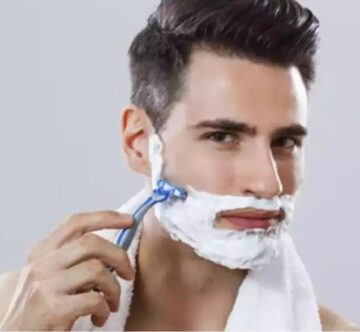
Wet shaving works best for shaving a beard with a safety razor. Below are some points for the best shaving technique for using a safety razor to groom the hair.
-
-
-
-
- The bristles of the brush should be softened with warm water
- The cream must be lathered up
- The best angle for using a safety razor is 30 degrees
- Let the blade do its job and never apply excess pressure
- The blades must be sharp
- An after-shave is a must
-
-
-
Part 2: How to Shave with a Safety Razor?
Today, we will learn how to use a double-edged safety razor like a pro. So, below are the steps you can follow to shave after preparing your gear and your skin.
Step 1: Prepare the Brush and the Shaving Cream
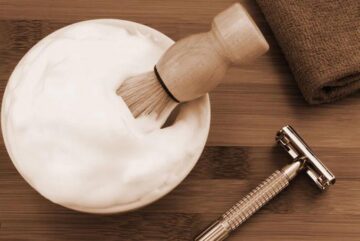
Soak your brush in warm water while you wash your face. This will soften the bristles without expanding them or destroying their texture.
Then, take about half a tablespoon of the shaving cream in the bowl, add a few drops of water to it, and stir it nicely with the brush until a uniform foaming cream is formed. The cream perfectly lathers up in 45 to 65 seconds. The consistency should be like that of a yogurt.
Step 2: Apply the Shaving Cream
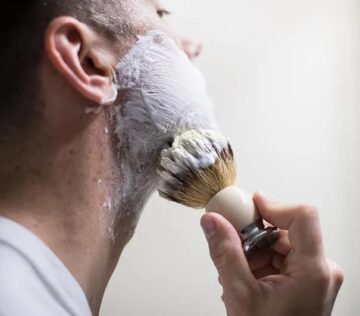
Take some lathered-up cream on the shaving brush and apply it on the beard, starting from your chin and sideburns and moving to the neck. Remember to use the brush like you are painting the beard. Do not poke the brush into your skin.
Moreover, see which of the shaving gel vs. foam. vs cream is most suitable for you here.
Step 3: Properly Angle the Brush
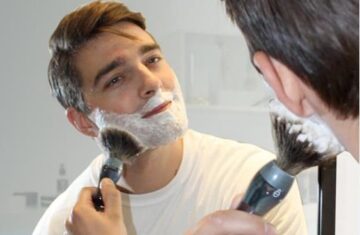
A safety brush must be angled at the right degree to remove the hair without harming the skin. So, hold the brush so that the blade touches the beard and is located 30 degrees from the beard.
Step 4: Shave the Beard from the Face
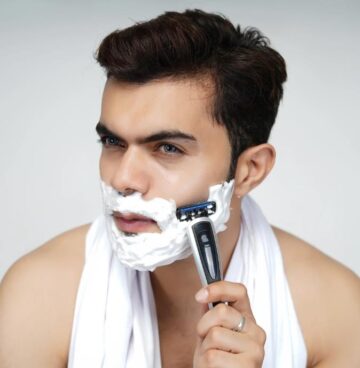
Start shaving the beard in the direction of the hair growth which is downwards on the face. Apply a little pressure and go for small strokes. Keep the angle at 30 degrees during all this time. Move from one side of the face to the other and shave the mustache as well.
Step 5: Shave the Hair on the Neck
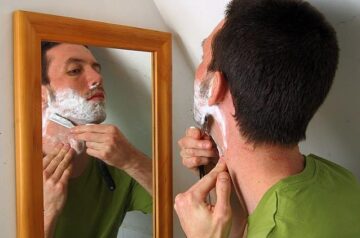
After the face, move on to the neck. Here the hair grows upwards. So, you should also shave upward. Extend your chin, tighten the skin, and shave the beard from the neck.
Step 6: Do a Second Pass
A single pass adequately shaves the beard, but it is not a close shave. For a close shave, do another pass at a right angle to the hair’s growth. So, move the blade across the skin.
If you are satisfied with the results, great. If not, do another pass. However, use a less aggressive safety razor this time. Always remember to put the shaving cream before each pass.
Step 7: Wash the Face
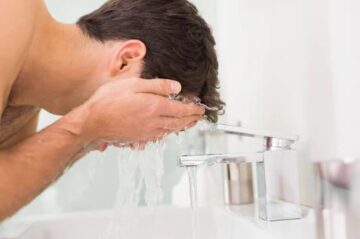
Once you are done with shaving, wash your face with warm water to remove the residues of the shaving cream. Then rewash the face with cold water to close the pores.
Step 8: Apply Post-Shaving Treatment
After washing, pat your face dry with a soft towel without rubbing it on the skin. Then, apply an enriched moisturizer to nourish the skin and prevent irritation.
Part 3: Tips for Perfect Shaving with a Safety Razor
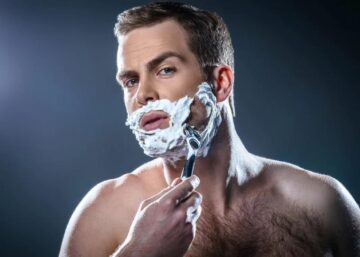
Below are some tips for perfect shaving with a safety razor.
-
-
-
-
- Use a sharp blade: A dull blade irritates the skin and leads to ingrown hair.
-
- Angle the razor correctly: You must manually adjust the angle of the safety razor to 30-45 degrees.
-
- Apply minimal pressure: The safety razors are designed for a close shave. So, you do not need to apply extra pressure.
-
- Shave in the direction of hair growth: It gently trims the hair without cuts.
-
- Small strokes: Long strokes can tug the skin and lead to nicks and bumps, while short strokes are more precise and gentle.
-
- Never shave on unprotected skin: Shaving without cream can cause nicks, bumps, ingrown hair, cuts, and razor burns.
-
- Never use hot water for shaving: Hot water desiccates the skin and shrinks the brush’s bristles. So, always use warm water for shaving.
-
-
-
Part 4: FAQs for Shaving with a Safety Razor
Is Shaving with a Safety Razor Better?
Yes, shaving with a safety razor is better than shaving with other types of razors. There is little to no pressure on the skin, less friction, less skin irritation, and better results in a few passes with the safety razor.
Furthermore, the benefits of the safety razor over cartridge razors are elaborated in safety razor vs. cartridge.
Should Safety Razors be Wet or Dry?
Safety razors are best used when they are wet. This is because a dry razor is cold and not too pleasing for the skin. So, always wet the razor with warm water for a better experience.
Can I Shave my Pubes with a Safety Razor?
Yes, you can shave your pubes with a safety razor. However, you should not just jump into using the safety razor on the pubes with no experience. So, try shaving other parts of the body and adopt the right technique before giving your intimate areas a try.
Conclusion
Who would have guessed that the safety razors from the 1900s would find their way back into society in the 2020s? Safety razors are here, giving the modern the ultimate traditional shaving experience.
Although using them is not a walk in the park, anyone can master the skills of using a double-edge safety razor over time with continuous practice and dedication. So, in this article, we explained the steps of how to use a safety razor.
All you need to do is gather your materials, prepare your skin, use the pre- and post-shave treatment, and keep the pressure low and the angle right for shaving the beard.

 By ULIKEBEAUTY
By ULIKEBEAUTY
